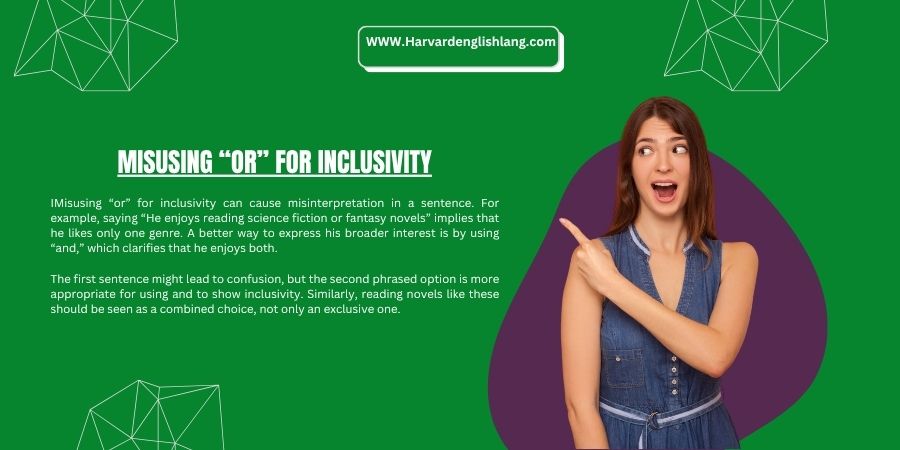In my early days of writing, I often struggled with and or without realizing the subtle differences they could make in communication. Over time, I discovered the treasures hidden in these small words, learning how each could shape the message I wanted to express.
While and often brings unity and simplicity, or offers choice and a hint of intrigue. Knowing when to use them is more than just following definitions — it’s about understanding their functions and applying that knowledge to create clarity.
From my perspective as a writer, the impact of these conjunctions is immense. They are not interchangeable, and using them effectively requires skill. When I intend to connect ideas clearly, I lean toward and; when I wish to present alternatives, or serves me better.
Each word carries its own nuances, and by respecting these, I can craft an article that not only informs but also resonates with the reader. Mastering this balance lets any writer deliver their ideas with precision and style.
Understanding “And”
In my experience, and works like a bridge that connects words, phrases, or clauses, acting as the glue that binds elements together with unity and inclusivity, making this conjunction a subtle yet powerful linguistic tool in writing.
Here’s how “and” shines in various scenarios:
Listing Multiple Possibilities:
When presenting a variety of options, I often picture myself as a conductor in a flavorful orchestra at a bakery, where muffins, croissants, danishes, and other pastries form the perfect selection.
I choose each pastry carefully, making sure it connects with the reader’s taste, much like words in writing. The range of fillings and the delicious spread allow anyone to envision the many choices available, all guided by the simple yet powerful use of and.
You Might Also like: Follow Up or Follow-Up
Joining Complementary Ideas:
In my teaching journey, I noticed that and naturally connects and weaving ideas together can enhance the overall message. When students attend lectures regularly and devote time to practicing concepts, they excel in the course. This simple link emphasizes the importance of both elements, allowing them to achieving greater success. As a teacher, I always encourage a mindset that fosters togetherness and inclusion so that every learner feels connected and valued.
From experience, I’ve learned that having the ability to create clear links in speech or writing not only supports comprehension but also helps contribute to lasting understanding.
The strength of “and” lies in its power to combine important factors without losing their individuality, while still building a sense of feeling and collaboration. By balancing importance with support, anyone can craft communication that leaves an impact.
Understanding “Or”
In my writing experience, presenting options with or as a conjunction changes the tone of a sentence by adding an element of choice.
Sometimes, it introduces alternatives that carry a sense of exclusivity, while at other times, it brings a layer of uncertainty that makes the reader pause and think more carefully before deciding.
Let’s explore how “or” plays its part:
Offering Choices:
When making a decision, I often find that how one presents options can shape the outcome. For example, when a friend asks, “Would you like coffee or tea?” the question clearly utilizes “or” to offer two distinct choices, implying only one will be selected.
In my own teaching, I’ve noticed that whether the beverage is fancy or simple, framing it this way keeps the conversation focused and easy, guiding people toward the choice that feels right for them.
Expressing Uncertainty
There are moments when a choice between two options expresses a sense of doubt. I remember standing at my desk today, glancing at my calendar and thinking, “It’s Tuesday or Wednesday, I’m just not entirely sure.
That small lack of definitive knowledge can make even simple decisions feel tricky, especially when both possibilities seem equally likely.
You Might Also like: Content vs Context
Creating Rhetorical Questions:
In my teaching days, I often used rhetorical questions to spark curiosity, especially when a tricky scenario demanded focus. A well-placed or in a sentence introduces a choice, implying that one option must be chosen, adding a touch of exclusivity.
This style emphasizes the urgency of a decision and highlights the uncertainty of the choices made. Sometimes the answer isn’t meant to be literal, but rather to guide learners toward the true meaning in time. Such impactful prompts push people to think deeper, even when no direct response is expected.
Choosing Between “And” and “Or”: Context is King

In my years of teaching English, I’ve seen how a small conjunction like and or or can shape the overall message in a way that’s truly pivotal. The choice between them is never random—it’s a decision that conveys your intended meaning and helps avoid confusion.
For example, in a recipe, saying “milk and eggs” means both are necessary ingredients, while “milk or eggs” implies only one is needed. That tiny change can dramatically affect the situation and the answer someone gets.
I’ve learned to consider the context, because each word plays a role in guiding readers toward the right interpretation.
When presenting ideas, choosing the clear and clear-cut term matters. Sometimes a call for unity might mean using and, showing a united front and offering a sense of togetherness.
Other times, or becomes the chosen tool, giving people an additional option and letting them decide what’s nice for their needs.
The importance of clarity here is mandatory, as it helps contribute to an unambiguous message that everyone can follow. Even in a sentence outside the kitchen, a single shift in a word choice can highlight meaning or lead to unintended misunderstandings. That’s why I treat these tiny connectors as powerful tools rather than afterthoughts.
And vs Or: A Comparison Table
| Feature | And | Or |
| Connection type | Creates a joint link between ideas for unity and inclusivity | Highlights separation and can show exclusivity or mutually exclusive possibilities |
| Effect on meaning | Adds both elements together, allowing them to exist side-by-side | Chooses one option over the other, sometimes excluding the rest |
| Example with drinks | “I like coffee and tea” – brings both drinks into the same thought | “I like coffee or tea” – you’re expected to choose just one |
| Example with desserts | “He likes chocolate and ice cream” – both flavors are enjoyed | “He likes chocolate or ice cream” – suggests preference for one, not both |
| Grammatical role | Connects words, phrases, or clauses to keep the sentence flowing and smooth | Introduces alternatives, options, or different possibilities |
Common Mistakes and How to Avoid Them
Misusing “and” for exclusivity:
Misusing and for exclusivity can confuse the message you’re trying to convey. When you choose to use and in a sentence like “You can have a healthy snack and dessert too,” it suggests you can indulge in both at the same time.
However, this is often unlikely or incorrect in many cases. Using or instead clarifies the choice, showing that only one option is possible rather than simultaneously enjoying both. So, getting the conjunction right is key for clear, grammatically sound communication.
Misusing “or” for inclusivity:

Misusing “or” for inclusivity can cause misinterpretation in a sentence. For example, saying “He enjoys reading science fiction or fantasy novels” implies that he likes only one genre. A better way to express his broader interest is by using “and,” which clarifies that he enjoys both.
The first sentence might lead to confusion, but the second phrased option is more appropriate for using and to show inclusivity. Similarly, reading novels like these should be seen as a combined choice, not only an exclusive one.
Proofreading is your friend:
Proofreading is your friend in writing clear sentences. Take time to read your work aloud with a keen eye for the usage of and or. This helps avoid doubt and makes the meaning clearly conveyed.
Always consider alternative phrasings if there’s room for confusion in your intended message. A well-proofread masterpiece shines because it uses the right conjunctions in the right places.
Utilize online resources:
When you search for the most appropriate conjunction between and and or, online dictionaries and thesauruses offer valuable guidance. If you’re unsure about the choice, quick research can provide clarity and help you ensure your sentence is impactful.
Always have a clear word in mind and use the one chosen to best fit the context. This approach will make your writing stronger and easier to understand.
You Might Also like: Divine or Devine: Clear Up the Confusion
Origins of “And” and “Or”
“And”
The word and has a deep history, tracing back to the Proto-Indo-European (PIE) language as the ancestor of many European and Asian tongues. Pronounced huh-eh or written as h₂e-/, it signifies one and together, showing its core function of linking and connecting elements to foster unity.
Over time, and evolved and emerged in Old English as and or ond, retaining its important role as a bridge between words and ideas. This etymological concept highlights the true sense of and as bringing things together.
“Or”
The word or traces its linguistic ancestry back to the Proto-Indo-European (PIE) root h₂ew/, pronounced huh-ew. This ancient ancestor of many European and Asian languages carries the meaning of either or choice, highlighting its fundamental role in offering alternatives.
Over time, or evolved through Proto-Germanic and took a more recognizable form in Old English as oððe or oðer. It has always served as a conjunction to introduce possibilities or present options, showing the clear connection between its concept and its use.
Understanding the etymological link between and and or as counterparts reveals how both words share a common root but diverge in function. While and unites, or distinguishes by introducing choice.
This dual heritage is reflected in how we use these words today, with or providing the essential flexibility in language to express alternatives, ensuring clarity in communication.
Conclusion
A skilled writer knows that choosing the right words and conjunctions is key to crafting a message that will resonate with the audience. By mastering the tools of writing, they can create clear, concise, and impactful prose.
In the writer’s arsenal, each technique plays distinct roles to suit any situation well. The way they balance understanding and clarity ensures their work reigns supreme.
With versatile skill, they can produce powerful pieces that feel elevated and one with their purpose, truly mastering the art in an impactful and well-crafted arsenal of words.

A communication coach with a background in public speaking and business English. He helps professionals refine their English for workplace success.
